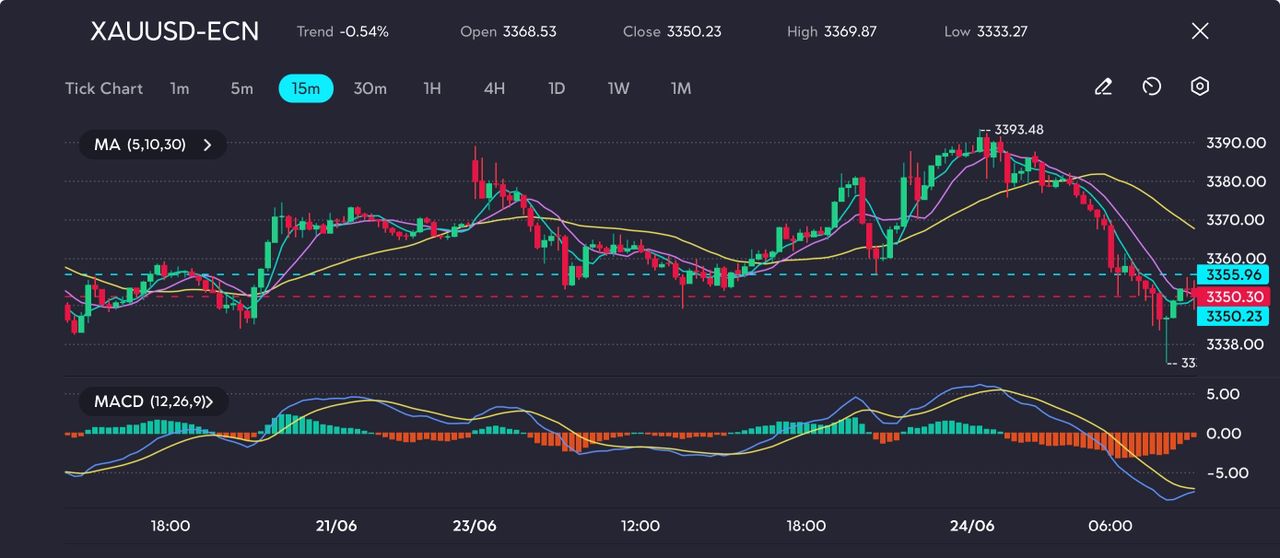
Key Points:
- Spot gold fell 0.6% to $3,349.89, hitting its lowest since 11 June.
- U.S. gold futures dropped 0.9% to $3,364.20 as ceasefire news tempered safe-haven demand.
Gold retreated sharply on Tuesday after U.S. President Donald Trump announced a “complete and total” ceasefire agreement between Israel and Iran. Spot gold dropped 0.6% to $3,349.89 an ounce, while U.S. futures fell 0.9% to $3,364.20. This marked gold’s weakest level since 11 June.
The ceasefire, set to take effect within 12 hours, followed a direct call between Trump and Israeli Prime Minister Benjamin Netanyahu. Trump’s team also reportedly engaged Iranian officials to negotiate the terms. A White House official said the truce depends on Iran refraining from further attacks—something Tehran has signalled it will respect.
This sudden de-escalation reduced the urgency for safe-haven flows into gold. Traders seeking shelter from geopolitical risks have begun to rotate out of bullion as conflict-driven upside wanes.
Technical Analysis
On the 15-minute XAUUSD chart, the MACD has crossed below the signal line with expanding negative histogram bars—indicating strong bearish momentum. Price recently hit a low of $3,333.27, and remains beneath all key moving averages (MA 5, 10, 30), confirming short-term downside bias.
Picture: Bearish pressure mounts on gold as short-term moving averages cross lower. See more on the VT Markets app
Unless the ceasefire unravels, gold may consolidate below $3,360.00 in the near term. A break below $3,333.00 could open the path to $3,315.00 support. Upside is likely capped near $3,370.00 unless risk sentiment deteriorates.
Rate Cut Hopes Stir, but Fed Remains Measured
The market now shifts focus to U.S. monetary policy. Federal Reserve Vice Chair Michelle Bowman signalled a shift in tone, stating the time to cut interest rates is approaching. Her comments came as U.S. business activity showed marginal cooling in June, but with inflation risks rising due to Trump’s renewed tariffs on imports.
Fed’s Austan Goolsbee noted that the current tariff wave has had a “more modest” economic impact than feared. However, with inflation ticking higher and job growth slowing, the path ahead for the Fed remains cautious. Markets are pricing in the first cut at the 18 September policy meeting.
Jerome Powell is scheduled to speak before the House Financial Services Committee later today. Although investors hope for clearer guidance, Powell has thus far avoided direct signals. Futures markets may remain choppy in the lead-up to his remarks.
If Powell leans dovish, expect gold to find intraday support near $3,345.00. However, any indication that the Fed will hold off on cuts could pressure gold further, especially with reduced geopolitical risk.










